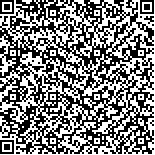| 本文已被:浏览 1480次 下载 1105次 |

码上扫一扫! |
|
|
| 海洋沉积物氨氧化菌群落结构的测序分析 |
|
贺 惠1,2, 陈阳阳3,4,5, 王勋功3,4,5, 甄 毓3,4,5, 米铁柱3,4,5, 于志刚3,6, 李 迎3,4,5
|
|
1.中国海洋大学 海洋生命学院;2.青岛海洋科学与技术国家实验室 海洋生态与环境科学功能实验室‘海洋环境与生态教育部重点实验室;3.青岛海洋科学与技术国家实验室 海洋生态与环境科学功能实验室;4.海洋环境与生态教育部重点实验室;5.中国海洋大学 环境科学与工程学院;6.海洋化学理论与工程技术教育部重点实验室
|
|
| 摘要: |
| 本文以氨氧化细菌(ammonia-oxidizing bacteria, AOB)特征基因氨单加氧酶(ammonia monooxygenase,AMO)α亚基基因(amoA)为目标基因(~491 bp), 分别采用克隆文库、454高通量测序和illumina测序技术对其群落结构进行了比较研究。结果表明, 454高通量测序和illumina测序技术得到的菌群多样性及丰富度均高于克隆文库技术。在菌群组成方面, 虽然3种测序技术检测到的优势类群均为亚硝化螺菌, 但在菌群丰度方面存在差异。3种测序技术中, 克隆文库技术在很大程度上可能高估物种丰度,且对部分低丰度类群的检测能力有限; illumina单端测序由于其测序片段较短, 可能存在物种注释错误、不能准确区分各物种间序列差异等问题; 比较而言, 454高通量测序技术能较为全面和准确地反映海洋沉积物中AOB的菌群结构特征。 |
| 关键词: 氨氧化细菌 454高通量测序技术 illumina测序技术 克隆文库 沉积物 |
| DOI:10.11759/hykx20171215002 |
| 分类号: |
| 基金项目:国家自然科学基金项目(41521064, 41620104001); 中国科学院海洋生态与环境科学重点实验室、青岛海洋科学与技术国家实验室海洋生态与环境科学开放课题(KLMEES201601) |
|
| Analysis of ammonia-oxidizing bacteria community structure in marine sediments using different sequencing technologies |
|
HE Hui,CHEN Yang-yang,WANG Xun-gong,ZHEN Yu,MI Tie-zhu,YU Zhi-gang,LI Ying
|
| Abstract: |
| In this study, we evaluated the advantages and disadvantages of clone library, pyrosequencing, and illumina sequencing of ammonia-oxidizing bacteria (AOB) communities in marine sediments using ammonia monooxygenase α subunit (amoA) (-491 bp). Results showed that the diversity and richness of AOB communities based on pyrosequencing and illumina sequencing were much higher than those obtained by traditional clone library. Although Nitrosospira was the predominant species detected by the three sequencing technologies, there were still some differences in its abundance. Among these three sequencing analyses, clone library may overestimate the abundance of species, and it is also limited for some low-abundance groups. Due to its short fragments, single-end illumina sequencing may result in annotation errors and cannot accurately distinguish divergence among sequences. Thus, pyrosequencing could provide a relatively more accurate and comprehensive description of AOB community structure in marine sediments. |
| Key words: ammonia-oxidizing bacteria pyrosequencing illumina sequencing clone library sediment |
